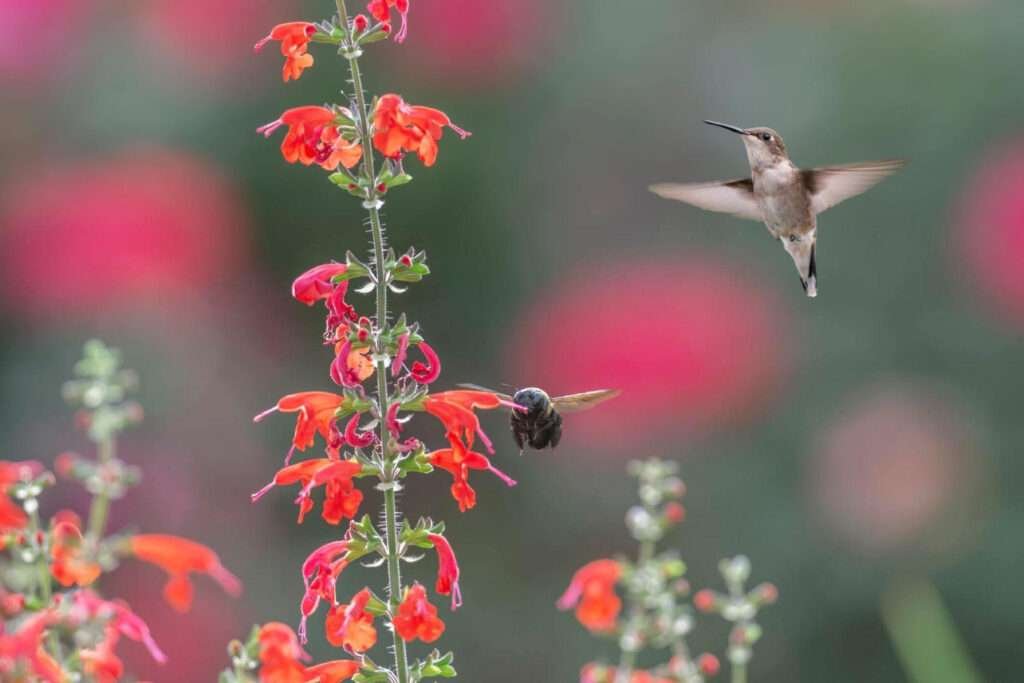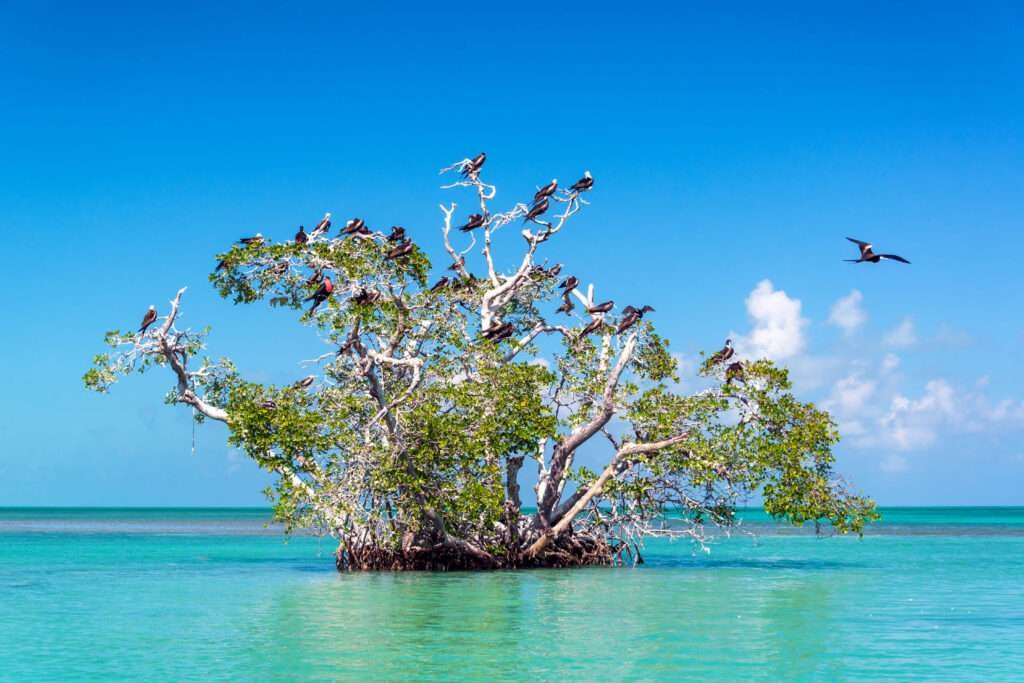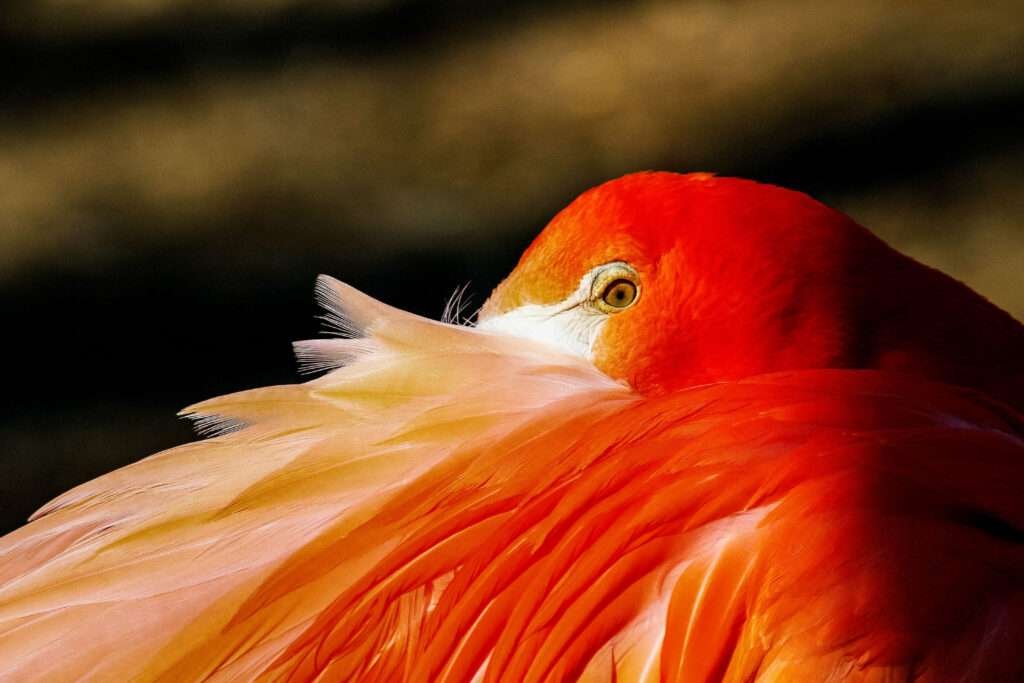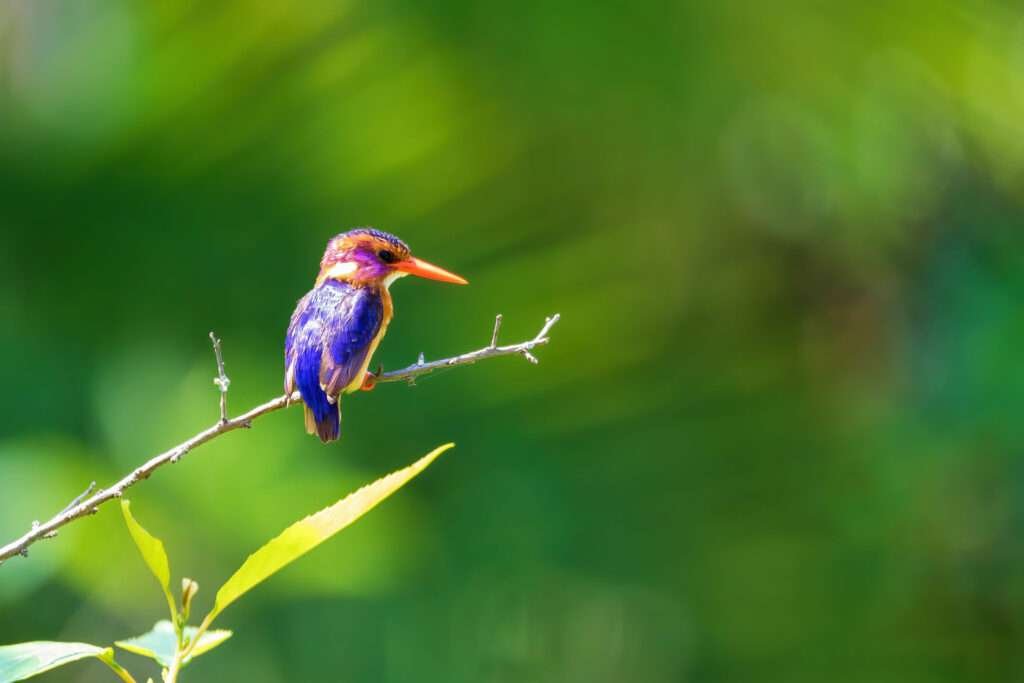Mexico boasts a rich diversity of bird species, with over 1,000 recorded varieties. Many of these birds are endemic, meaning they’re found nowhere else.
Mexico’s vibrant avian population draws bird watchers and nature enthusiasts from all over the globe. The country’s varied habitats, including forests, deserts, and coastal regions, support an impressive array of birdlife, ranging from the striking Quetzal to the sociable Mexican Jay.
These environments provide an important haven for resident species and migratory birds seeking sanctuary during their seasonal journeys. Protecting these habitats is crucial for maintaining the health of Mexico’s unique bird populations and the region’s overall biodiversity. Accurate documentation and conservation efforts are vital in studying and preserving Mexico’s avian treasures.
Diversity Of Bird Species
Endemic Birds
Mexico is proud to house birds that are found nowhere else on Earth. These unique species are known as endemic birds. They are the country’s avian jewels, attracting enthusiasts globally. Here’s a peek at some of the endemic species:- Red Warbler – a vision in its scarlet plumage
- Golden-cheeked Woodpecker – striking with its gilded cheeks
- Bumblebee Hummingbird – tiny yet vibrant

Migratory Birds
Each year, skies become highways for countless birds heading south. These migratory birds escape the north’s chill to bask in Mexico’s warmth. Many species make incredible journeys, some travelling thousands of miles. Notable visitors include:- Monarch Butterflies – though not birds, their migration is iconic
- American Redstart – with its fiery tail, it is a sight to behold
- Peregrine Falcon – the fastest bird, diving at breathtaking speeds
Guide to Florida Birds: Types, Habitats, and Birdwatching Tips
Top Birdwatching Destinations
Copper Canyon
Copper Canyon, a network of six distinct canyons, offers a sanctuary for birdwatchers. The Sierra Madre Occidental embraces this natural marvel and boasts a diverse ecosystem. Sightings of Elegant Trogons and Eared Quetzals turn trips into treasure hunts.- Where to go: Mirador, Posada Barrancas.
- What to see: Hummingbirds, woodpeckers.
Yucatan Peninsula
The Yucatan Peninsula is a celestial vault of avian species. The serene reserves of Ría Lagartos and Ría Celestún magnetize Pink Flamingos and Yucatan Jays. Explore ancient Mayan ruins while the air fills with exotic bird calls.| Spot | Birds to Lookout |
|---|---|
| Ría Lagartos | Mexican Sheartail, Flamingos |
| Celestún | Kingfishers, Pelicans |
Baja California
For a blend of desert terrain and marine vistas, head to Baja California. This peninsula is a prime location for spotting Whales and seabirds like the Blue-footed Booby. The Island of the Dead, or Isla de los Muertos, is a hidden gem for enthusiasts.- Visit the San Quintín Bay for shorebirds.
- Spot Grey Whales at Guerrero Negro.
Unique Bird Habitats
Rainforests
The tropical rainforests of Mexico are a birdwatcher’s dream. These dense jungles are the perfect backdrop for a symphony of bird calls. Avian species thrive among the verdant foliage and towering canopies. A highlight in these emerald realms is the Quetzal, a symbol of Mexican wilderness with its vivid plumage. Rainforests provide a haven for endemic species, where birds of all colours and sizes coexist.- Scarlet Macaws with brilliant red feathers
- Keel-billed Toucans showcasing rainbow beaks
- Motmots with turquoise wings
Deserts
In sharp contrast, the Mexican deserts reveal a different set of winged beauties adapted to the extremes. These arid zones might seem inhospitable, yet they are alive with birdlife. Birds here have evolved to survive the harsh conditions. The vibrant Vermilion Flycatcher, for instance, brings a flash of color against the sandy backdrop. Cactus-dwelling species like the Cactus Wren make their home in these sparse landscapes.| Desert Bird | Adaptation |
|---|---|
| Gilded Flicker | Nests in cactus cavities |
| Phainopepla | Feeds on desert mistletoe |
| Greater Roadrunner | Speedy ground hunter |
Coastlines
Mexican coastlines are where the sea meets the sky, and birds abound. Coastlines offer breeding grounds for countless marine birds. Species like the Magnificent Frigatebird rule the skies, while the American Oystercatcher scavenges along the shore. The sandy beaches and rocky coasts are also vital nesting sites for endangered sea turtles, creating a crucial interplay between avian and marine life.- Brown Pelicans diving for fish
- Reddish Egrets dancing in shallow waters
- Blue-footed Boobies nesting on coastal rocks
Conservation Efforts
The beauty and diversity of Mexican birds enchant nature enthusiasts. To preserve this natural heritage, various conservation efforts are underway. These focus on protecting habitats, saving threatened species, and supporting community-driven projects. These initiatives aim for a sustainable coexistence between humans and bird populations. Protected Areas
Protected Areas
Natural reserves shield the birds’ homes from harm. Mexico boasts numerous such areas where flora and fauna flourish. Reserva de la Biosfera Sierra Gorda Parque Nacional Monarch Butterfly Reserve Islas Marietas National Park In these places, birds live safely. Tourist visits happen carefully so as not to disturb the feathered residents. Threatened Species
Threatened Species
Certain species face risks due to habitat loss and climate change. The Mexican government, alongside global organizations, identifies and helps at-risk birds.
| Threatened Bird | Conservation Status |
|---|---|
| Bald Eagle | Protected |
| Great Green Macaw | Critical |
| Military Macaw | Vulnerable |
Community-based Conservation Projects
Community-based Conservation Projects
Communities play a key role in saving birds. They lead projects that make a big difference. Here are a few examples: Forest Rejuvenation Programs Eco-friendly Tourism Wildlife Monitoring By involving local people, these projects protect birds and improve livelihoods.
Birding Tips
Best Time To Visit
Mexico’s birds welcome visitors all year round. But, for an unrivalled spectacle, plan your trip during spring or autumn migrations. The months from November to April boast the greatest diversity, turning the country into a birdwatcher’s paradise.Essential Birdwatching Gear
- Binoculars – Choose a comfortable, high-quality pair for crystal-clear bird viewing.
- Field Guide – A guidebook with pictures helps identify species and track sightings.
- Comfortable Clothing – Wear layers suited to the varied Mexican climates. Camouflage or earth tones blend with nature.
- Notebook & Pen – Jot down your observations and rare finds.
- Camera – A good camera captures moments of your feathered friends for eternity.
Local Guides
Selecting a knowledgeable local guide can transform your birding trip. They offer unique insights into secret spots where rare species thrive. Engage with local birding clubs or tour operators to find guides who speak your language and understand the nuances of the spectacular Mexican avifauna.Popular Bird Species
Resplendent Quetzal
The Resplendent Quetzal is a symbol of beauty. This bird, with vibrant green plumage, rules the skies of Mexican cloud forests. Its long, cascading tail feathers are a sight to behold. Quetzals feed on fruits and insects. Birdwatchers often travel to Mexico’s high-altitude forests to glimpse this noble creature.Flamingos Of Celestun
The Yucatan Peninsula is home to the fabulous Flamingos of Celestun. Shimmering pink feathers define these long-legged birds. In Celestun, you witness vast flocks painting the sky at sunset. These birds feed in the shallows, sifting the water for nourishment. Their mating dances are particularly enchanting.Violet-crowned Hummingbird
The Violet-crowned Hummingbird is a tiny gem. Its radiant purple head is unmistakable among Mexico’s diverse species. These birds flit energetically from flower to flower. They have an important role as pollinators in their habitats. The soft humming of their wings often detects their presence.| Bird Species | Distinct Features | Habitat |
|---|---|---|
| Resplendent Quetzal | Emerald green plumage, long tail | Cloud forests |
| Flamingos of Celestun | Pink feathers, long legs | Wetlands, shallow waters |
| Violet-crowned Hummingbird | Purple head, rapid wingbeat | Woodlands, gardens |
- Bird lovers can visit different habitats to see these species.
- The best time for birdwatching often varies by species.
- Conservation efforts help protect Mexico’s avian biodiversity.
Frequently Asked Questions For Birds In Mexico
What Are The Most Common Birds In Mexico?
The most common birds in Mexico are the House Sparrow, the Rufous-backed Robin, and the Great-tailed Grackle. The Vermilion Flycatcher and the golden eagle are also prevalent.
What Birds Are Only Found In Mexico?
Several bird species are unique to Mexico, including the Mexican Chicken, Eared Quetzal, and Socorro dove. Other exclusives are the Bumblebee Hummingbird and the Aztec Thrush.
What Exotic Birds Are In Mexico?
Mexico has numerous exotic birds, including the resplendent quetzal, military macaw, and Mexican motmot. In this biodiverse region, you can spot vibrantly coloured toucans and the endemic orange-breasted bunting.
What Is Mexico’s National Bird?
Mexico’s national bird is the Golden Eagle. This majestic bird symbolizes strength and freedom in Mexican culture.
Conclusion
Exploring Mexico’s diverse avian treasures has been a delight. With each region offering a unique spectacle, bird enthusiasts are spoilt for choice. Remember to protect these natural wonders. Your next trip could hold an unforgettable feathered encounter.




